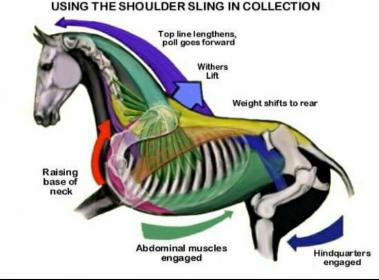Hi everyone, I’ve been thinking a lot about this, and can’t figure it out. Take a look at these two pictures.
https://ibb.co/GQqMYB1
https://ibb.co/7KJ9ghs
My question is, WHY would a horse WANT to seek contact, and be on or close to the vertical (yes, as a result of hind end engagement) when the bit action depresses the tongue and/or pushes on the bars when their head is positioned this way?
when the bit action depresses the tongue and/or pushes on the bars when their head is positioned this way?
Take a look at the grey in the second link. I know this horse is behind the vertical, but even if its nose was in a more appropriate position (vertical, or a little in front), the action of the hand would still be perpendicular to the bars and tongue. The first link shows an xray of a french link when the reins are engaged and a horses poll is flexed, showing a complete restriction of the tongue that looks insanely uncomfortable. I feel like this would completely restrict swallowing.
In comparison, the chestnut pictured with its head down and out (something you might see in L&L) pulls the bit into the corners of the mouth “the action of the hand is parallel to the tongue and bars”. This seems 100x more comfortable for the horse.
Any explanation? I know the front end is a result of the hind end… but lets assume the horse is engaging properly behind, WHY would they want to seek and maintain a contact (other than the Long and Low positioning) that depresses their tongue or bars? It seems like this completion of the “circle of energy” would result in discomfort or pain.

 and can include having to rate a hot horse more emphatically than in dressage, but they still understand that you don’t hang on the face and you ride off your seat as much as you can ( why the distinguish so many variations of light seat full seat etc which affect the horse’s balance).
and can include having to rate a hot horse more emphatically than in dressage, but they still understand that you don’t hang on the face and you ride off your seat as much as you can ( why the distinguish so many variations of light seat full seat etc which affect the horse’s balance).